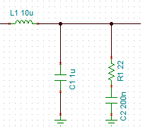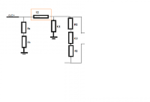AJAB
Junior Member level 1

Hi,
I am trying to get an equation for calculating the power dissipated by Class D amplifier in output circuit in the inductor of LC filter.
I am confused as I am getting different equations on different websites.

What is the difference between DC power and AC power dissipated.
DC power = V/2*freq*L
AC power = V/|XL|
is this correct?
Thanks,
Archana.
I am trying to get an equation for calculating the power dissipated by Class D amplifier in output circuit in the inductor of LC filter.
I am confused as I am getting different equations on different websites.

What is the difference between DC power and AC power dissipated.
DC power = V/2*freq*L
AC power = V/|XL|
is this correct?
Thanks,
Archana.




